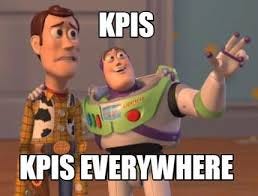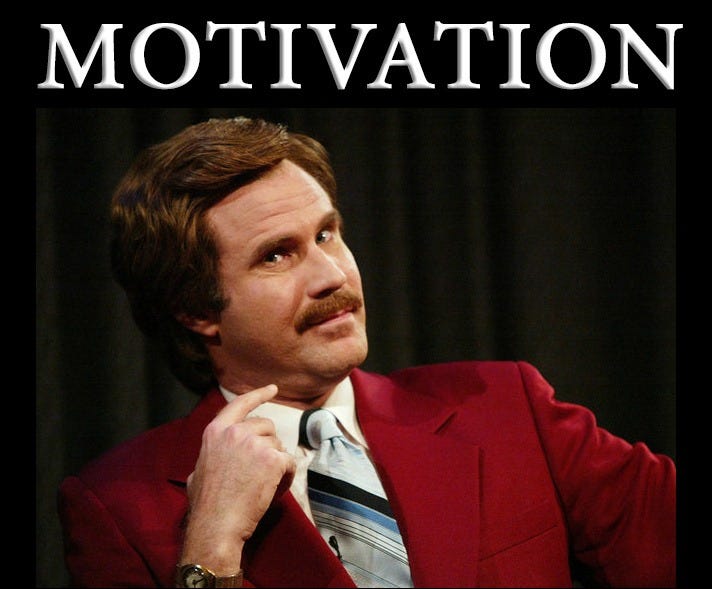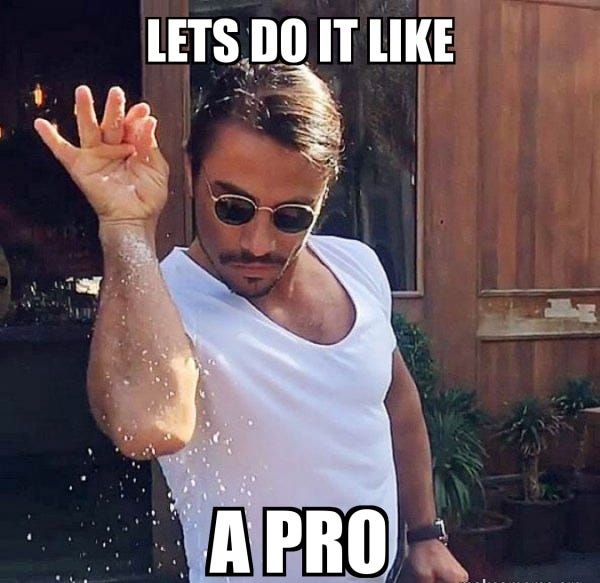When you first start building an agency, it feels simple: find a client - deliver the project - get paid. In those early days, speed is everything. You go from point A (a client request) to point B (project delivery) as fast as possible, without thinking too much about what happens in between.
I remember this stage vividly. Projects came from freelancing platforms, personal referrals, or random introductions. I would take on anything I could handle myself or with a couple of freelancers. The “system” lived only in my head. And I told myself, “We’ll figure out processes later - right now we just need to work.”
That’s the trap so many founders fall into. The truth is, you only have 24 hours in a day. If everything depends on you, growth is impossible. Even if you land more clients, you’ll quickly hit a ceiling. There simply isn’t enough time or energy to scale.
The key is understanding what a system really is. It’s not corporate bureaucracy or endless paperwork. A system is a set of repeatable actions that reliably produce a predictable outcome. It’s steps that are executed well, no matter who’s doing them. And most importantly - those steps must be documented, clearly understood by your team, and able to function without your constant presence.
In this letter, we’ll unpack why systems in agencies often fail, why they sometimes even make things worse, and how to build them so they actually move your business forward. I’ll share lessons from my own companies and from agencies I’ve invested in and helped scale. My guess? You’ll see parts of your own business in these stories - and more importantly, you’ll finally see where the real bottlenecks are.
📩 Make sure you’re subscribed to this newsletter so you don’t miss future deep dives like this, plus pro-level content where I share my most guarded strategies for scaling agencies.
Stage 1 - No System At All
This is the most common starting point for agencies. Whether you’re in marketing, development, automation, or AI services, the first stage is pure hustle. You’re running everything from memory, reacting to whatever the day throws at you.
At this stage, “process” means you remembering to follow up with a client, or to send that proposal, or to check in with a freelancer. There’s no written documentation, no structured handoffs, no repeatable workflows. Everything relies on you - the founder - knowing what to do and making sure it gets done.
The problem is, without a system, nothing is truly scalable. You can have the best sales month ever, but you’ll also hit burnout faster than you expect. One missed follow-up means lost revenue. One forgotten step in delivery means a frustrated client.
So where do you start? With the simplest, most powerful tool you have: checklists.
A checklist turns a mental process into a repeatable sequence anyone on your team can follow. Let’s take project management as an example:
Receive the project brief from the client
Meet with the team to break down deliverables and timelines
Assign tasks and set deadlines in your project management tool (Jira, ClickUp, Trello, etc.)
Hold daily stand-ups to track progress and solve blockers
Run weekly retrospectives to review performance
Deliver the final project and collect feedback
That’s it. It’s simple - but it’s a system.
The same logic applies to sales. A sales checklist might look like:
Send intro email or LinkedIn message
Schedule a discovery call
Qualify the lead and confirm fit
Send proposal within 24 hours
Follow up at set intervals
Close deal and hand over to delivery team
Once you have these checklists, you can delegate them. And here’s the key: when you hand over a checklist, you hand over responsibility. That’s how you free yourself from being the only person who “knows how it’s done.”
But here’s where most founders stop - and it’s why so many agencies stall at this stage. They build the checklist, hand it off, and assume it’s working. In reality, the system fails without control.
You need a mechanism to make sure tasks are completed as intended. At first, that might be you personally reviewing work. Later, it could be a dedicated quality control manager or an assistant who checks progress daily and sends you a status report before the end of the day.
Without control, even the best-designed system turns into “optional guidelines” that no one follows. With control, you create accountability - and accountability is what keeps systems alive.
Stage 2 - The Half-Built System That’s Failing You
This is where many growing agencies find themselves after a year or two in business.
You’ve put some structure in place. There’s a sales process (sort of). There’s a delivery workflow (mostly). But the reality? It’s inconsistent.
Sometimes the process works perfectly. Other times it collapses - and no one’s really sure why. Deadlines get missed. Clients feel like communication is all over the place. And you, the founder, are still jumping in to “save” projects at the last minute.
The truth is, a half-built system is often worse than no system at all. When there’s no system, you know you’re winging it. When there’s a partial system, you assume things are under control - until you realize they’re not.
So why does this happen?
Usually, it comes down to two things: ownership and control.
A system without a dedicated owner isn’t really a system - it’s just a document in Google Drive. You need a personwhose responsibility is making sure it works, improving it over time, and reporting back when something breaks. In project delivery, that’s often an Operations Manager or Chief Delivery Officer. In sales, it’s your Head of Sales.
Control is the second missing piece. Many agencies at this stage have checklists, SOPs, and guidelines, but no monitoring. Without KPIs and regular reporting, you can’t tell whether the system is being followed - or if it’s producing the right results.
Here’s a simple framework to fix this stage:
Assign an owner for each system.
Set clear KPIs that measure its success (e.g., project delivery on time, sales proposal-to-close ratio, lead quality score).
Create a reporting rhythm (daily stand-ups, weekly reports, monthly reviews).
Audit the process quarterly to identify bottlenecks or outdated steps.
It’s also critical to make sure your systems are tied to what clients actually pay you for. If your system is designed to produce 50 new leads a month, but clients only care about qualified leads, you’re optimizing for the wrong outcome.
One of the simplest ways to check alignment is to ask:
“If we improve this process by 20%, will it have a direct, visible impact on revenue or client satisfaction?”
If the answer is no - you’re measuring the wrong thing.
Fixing a half-built system is less about adding complexity and more about tightening accountability. When everyone knows exactly what’s expected, how it’s measured, and who’s responsible, you eliminate most of the “random failures” that stall growth.
Stage 3 - When the System Works... But Growth Doesn’t
This is one of the most frustrating places for any agency owner to be.
You’ve invested months - maybe years - into building robust systems.
Your team knows the processes. KPIs are clear. Deadlines are met. Clients are (mostly) happy.
And yet... revenue is flat.
Growth feels like it’s stuck in neutral.
Here’s the hard truth: a well-oiled system doesn’t automatically create scale. Systems are multipliers - they amplify what’s already working. If your offer, sales process, or market positioning isn’t strong, the system will just make you efficiently stuck.
There are three common reasons why this happens:
1. The System Is Optimizing for the Wrong Goal
Sometimes the process is perfect - but for the wrong purpose.
If your delivery system is built to handle fixed-price projects, but your market is shifting toward long-term retainers or pay-per-performance deals, you’re solving yesterday’s problem.
The fix:
Review whether your processes align with your current (and future) business model.
Identify trends in client requests, pricing models, and buying behavior.
Adapt the system so it supports the offers with the highest growth potential.
2. The Right System, The Wrong People
Even the most polished SOPs fail if the execution is weak.
You might have a rock-solid onboarding process, but if the Account Manager running it doesn’t have the skills, attention to detail, or motivation, the outcome will suffer.
Ask yourself:
Are the right people in the right seats?
Do they have the training, tools, and incentives to excel?
Is there a feedback loop for performance improvement?
Sometimes, replacing or retraining a single key person can unlock growth the system was capable of all along.
3. No Emotional or Financial Incentive to Push Beyond “Good Enough”
A lot of agencies hit this wall because the team is... comfortable.
They’re doing what’s required - but nothing extra. They’re not pushing to improve delivery times, upsell clients, or find process innovations.
That’s a motivation problem, not a process problem.
The solution? Tie part of compensation to the KPIs that drive growth. If a Project Manager’s bonus is linked to upsells or on-time delivery, they suddenly have skin in the game.
At this stage, your job as the founder isn’t to build more systems - it’s to make sure the systems you already have are focused on the right targets, executed by the right people, and fueled by the right incentives.
Because the truth is, the best-designed process in the world can’t scale an agency if it’s aimed in the wrong direction, run by the wrong team, or powered by zero motivation.
Stage 4 - When the System Works, the Team is Strong... But Scaling Still Feels Impossible
Reaching this stage can be deceptive.
From the outside, everything looks like it’s “ready” for growth:
Processes are documented and efficient
People are skilled and accountable
Client satisfaction is stable or even improving
And yet... every time you try to scale, something stalls, breaks, or drains your margins.
After working with dozens of agencies, here’s what I’ve seen hold them back at this level:
1. Lack of Sales Volume to Feed the System
Systems don’t create demand - they process it.
If your pipeline isn’t consistently full, your delivery machine will sit idle.
This is why many agencies discover they need to fix their sales engine after building out operations.
The fix:
Commit to a consistent outbound and inbound lead generation strategy
Document your sales process as thoroughly as your delivery process
Track leading sales indicators (calls booked, proposals sent) alongside delivery KPIs
Without enough incoming business, your perfectly tuned operations team becomes an expensive fixed cost.
2. Cost Structure That Can’t Handle Scale
Some agencies unknowingly set themselves up for margin collapse when they grow.
If your cost structure is too rigid - for example, heavy full-time salaries instead of a mix of full-time and contractors - scaling quickly can push you into cash flow trouble.
The fix:
Maintain a flexible blend of fixed and variable costs
Review utilization rates regularly
Model your margins at double or triple your current client volume to spot risks early
3. A Strategy That Doesn’t Match the Market’s Evolution
Even if you’re operationally excellent, your growth will plateau if your service mix or pricing model no longer matches market demand.
Markets shift. Buyer priorities change. New competitors emerge.
The fix:
Schedule quarterly strategy reviews to test your offer against market trends
Be willing to sunset services that are no longer profitable or scalable
Double down on the offers that show the highest lifetime client value (LTV)
At this stage, growth isn’t about “working harder” inside the business - it’s about tightening the link between your market, your offer, and your capacity to deliver profitably.
Think of it this way:
If Stage 1 and Stage 2 are about building the car, and Stage 3 is about finding the right driver, Stage 4 is about making sure you have the fuel - and a road worth driving on.
One-to-One Call: Unblock Your Agency’s Growth
Right now, your agency might be running into the same wall over and over again - processes are messy, sales are unpredictable, and your team depends on you for every decision. Maybe you’ve tried to fix it by adding more tools, hiring more people, or even copying “best practices” from others. But here’s the uncomfortable truth: without a real, working system, you’re only scaling your problems.
I’ve seen agencies bleed tens of thousands of dollars a month simply because they didn’t know where their operational bottlenecks were. They didn’t track the right metrics, they hired in the wrong order, or they sold services the team wasn’t ready to deliver. The result? Burnout, cash flow gaps, unhappy clients, and a founder stuck doing everything.
If this sounds familiar, you don’t have to guess your way out of it.
In a 1:1 growth call, I’ll:
Pinpoint where your systems are failing and why they’re slowing your growth.
Give you a tailored roadmap to restructure your sales, operations, and delivery.
Show you how to set up control points so your business runs without constant micromanaging.
This isn’t theory - it’s the same framework I’ve used to help agencies double their revenue while cutting their founder’s workload in half.
👉 Book your Growth Call here and let’s remove the roadblocks holding your agency back.
🚀 Get the Pro Version of This Newsletter
If you found this valuable, the Pro version goes even deeper.
In Pro, I share:
My private playbooks for scaling agencies 2-3x from $150K-$500K+ ARR.
Exact templates, checklists, and client scripts we use in my portfolio companies.
Deep-dive breakdowns of what’s working in sales, delivery, and client retention right now.
These are things I never post publicly - because they come straight from real operations in active agencies.
If you’re serious about scaling faster and with fewer mistakes, Pro will save you months (if not years) of trial and error.
👉 Upgrade to Pro here and get immediate access to all past Pro content.












